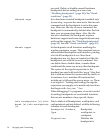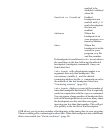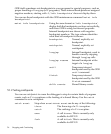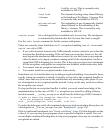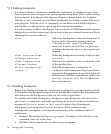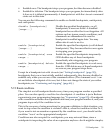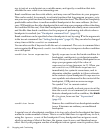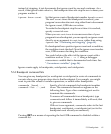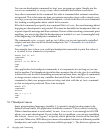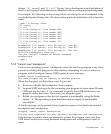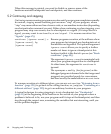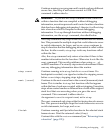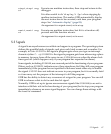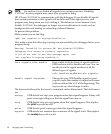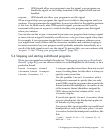You can use breakpoint commands to start your program up again. Simply use the
continue command, or step, or any other command that resumes execution.
Any other commands in the command list, after a command that resumes execution,
are ignored. This is because any time you resume execution (even with a simple next
or step), you may encounter another breakpoint―which could have its own command
list, leading to ambiguities about which list to execute.
If the first command you specify in a command list is silent, the usual message about
stopping at a breakpoint is not printed. This may be desirable for breakpoints that are
to print a specific message and then continue. If none of the remaining commands print
anything, you see no sign that the breakpoint was reached. silent is meaningful only
at the beginning of a breakpoint command list.
The commands echo, output, and printf allow you to print precisely controlled
output, and are often useful in silent breakpoints. See “Commands for controlled
output” (page 290).
For example, here is how you could use breakpoint commands to print the value of
x at entry to foo whenever x is positive.
break foo if x>0
commands
silent
printf "x is %d\n",x
cont
end
One application for breakpoint commands is to compensate for one bug so you can
test for another. Put a breakpoint just after the erroneous line of code, give it a condition
to detect the case in which something erroneous has been done, and give it commands
to assign correct values to any variables that need them. End with the continue
command so that your program does not stop, and start with the silent command
so that no output is produced. Here is an example:
break 403
commands
silent
set x = y + 4
cont
end
5.1.7 Breakpoint menus
Some programming languages (notably C++) permit a single function name to be
defined several times, for application in different contexts. This is called overloading.
When a function name is overloaded, 'break function' is not enough to tell GDB
where you want a breakpoint. If you realize this is a problem, you can use something
like 'break function(types)' to specify which particular version of the function
you want. Otherwise, GDB offers you a menu of numbered choices for different possible
breakpoints, and waits for your selection with the prompt '>'. The first two options are
62 Stopping and Continuing



